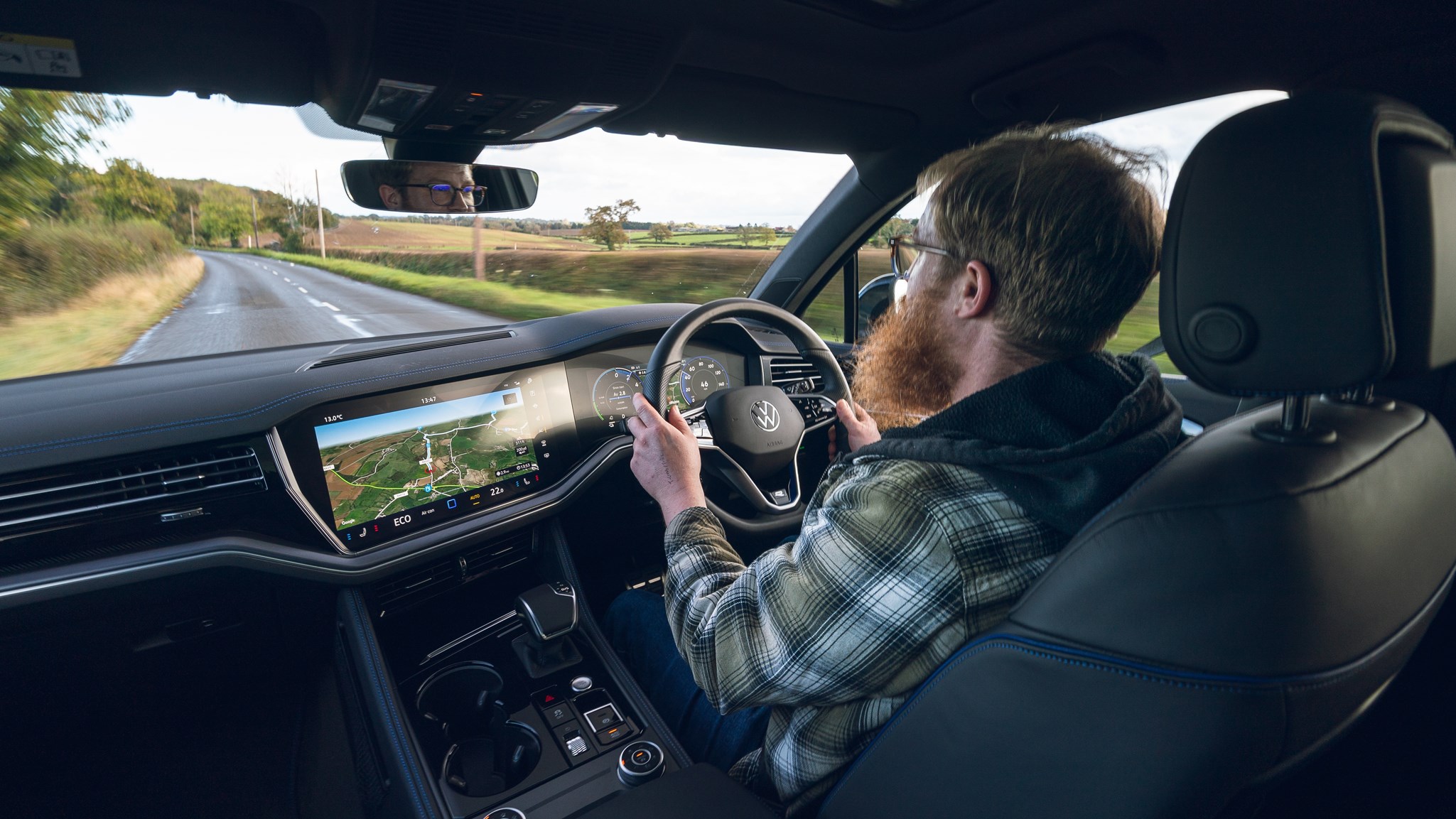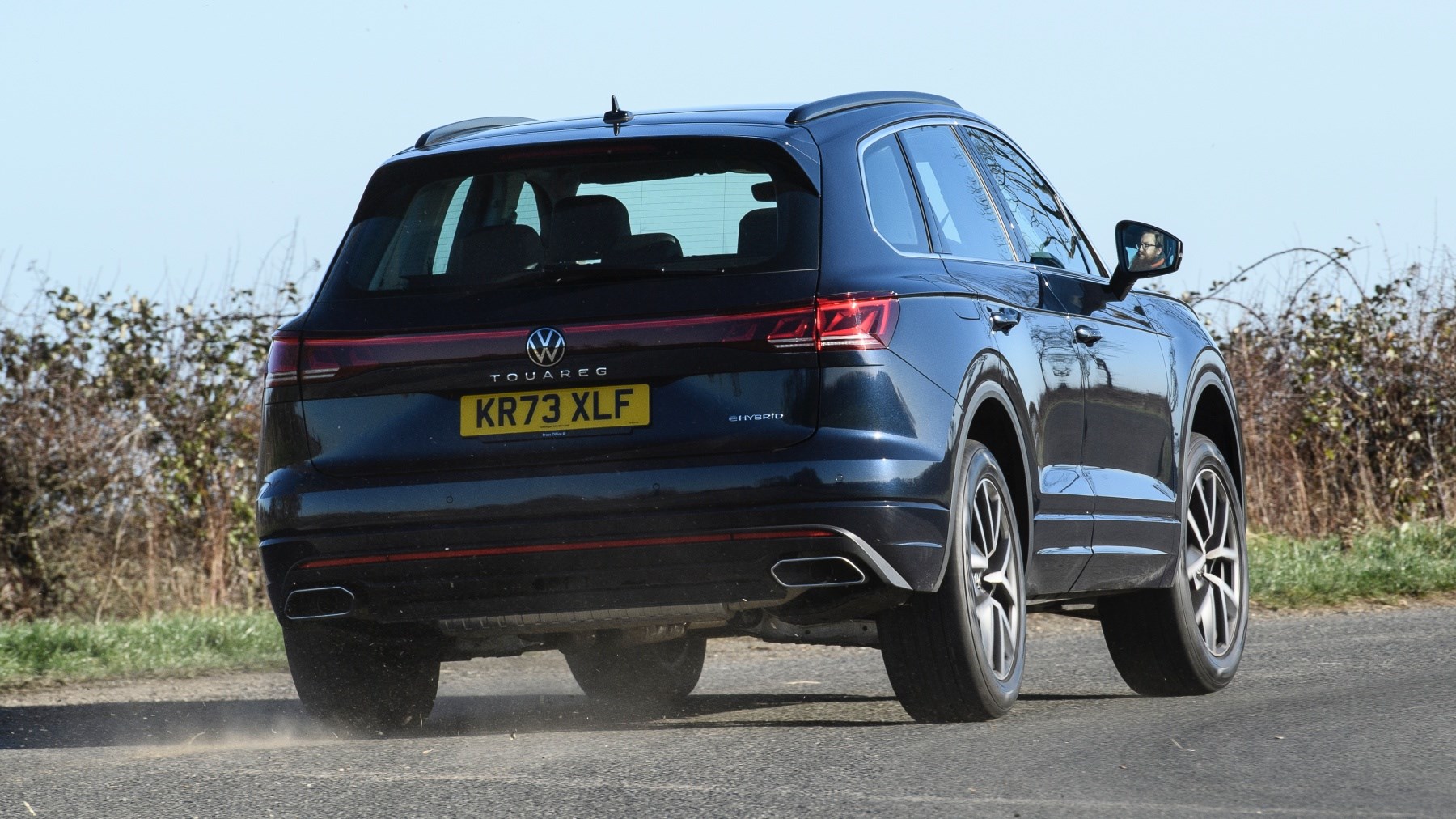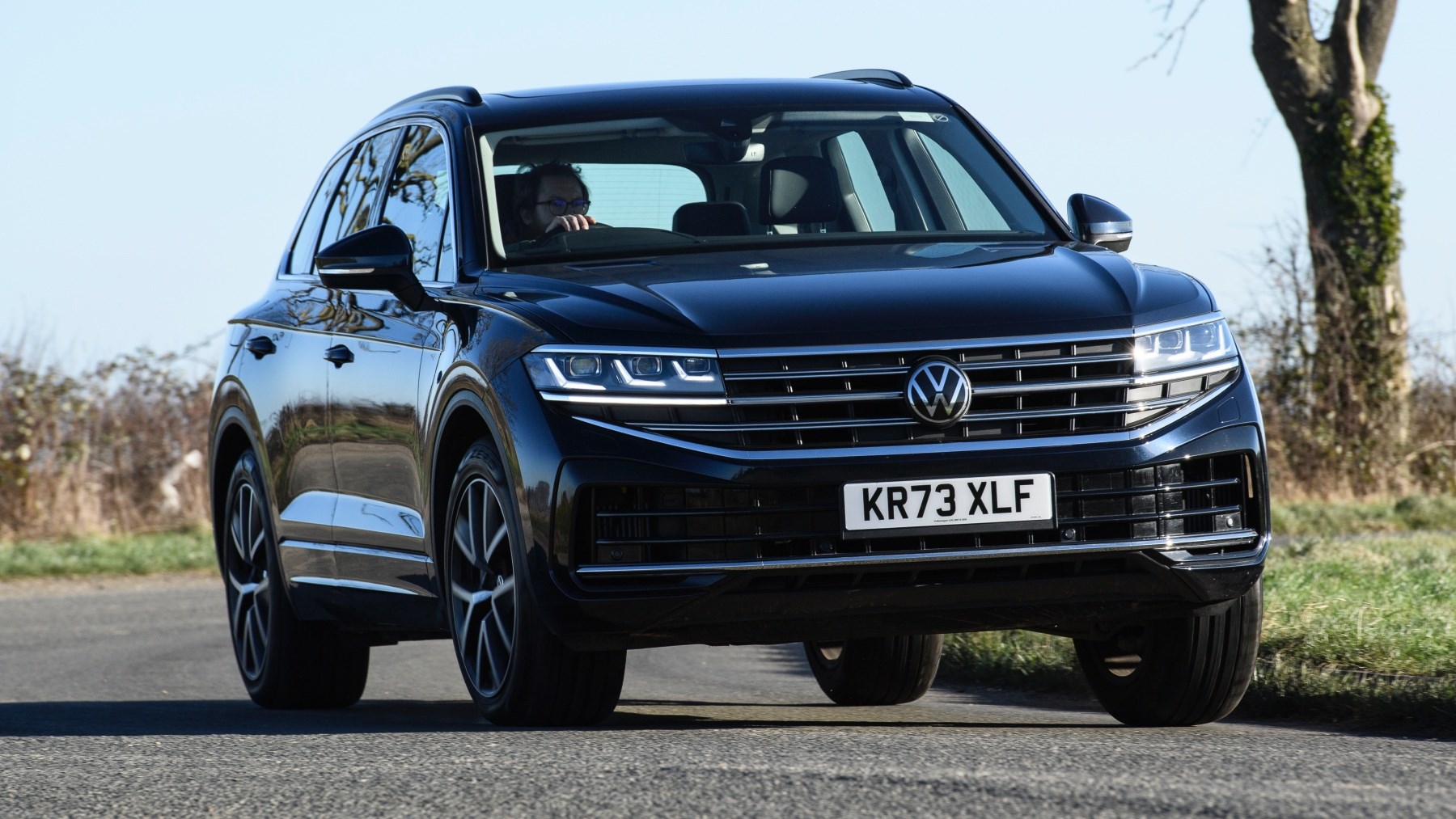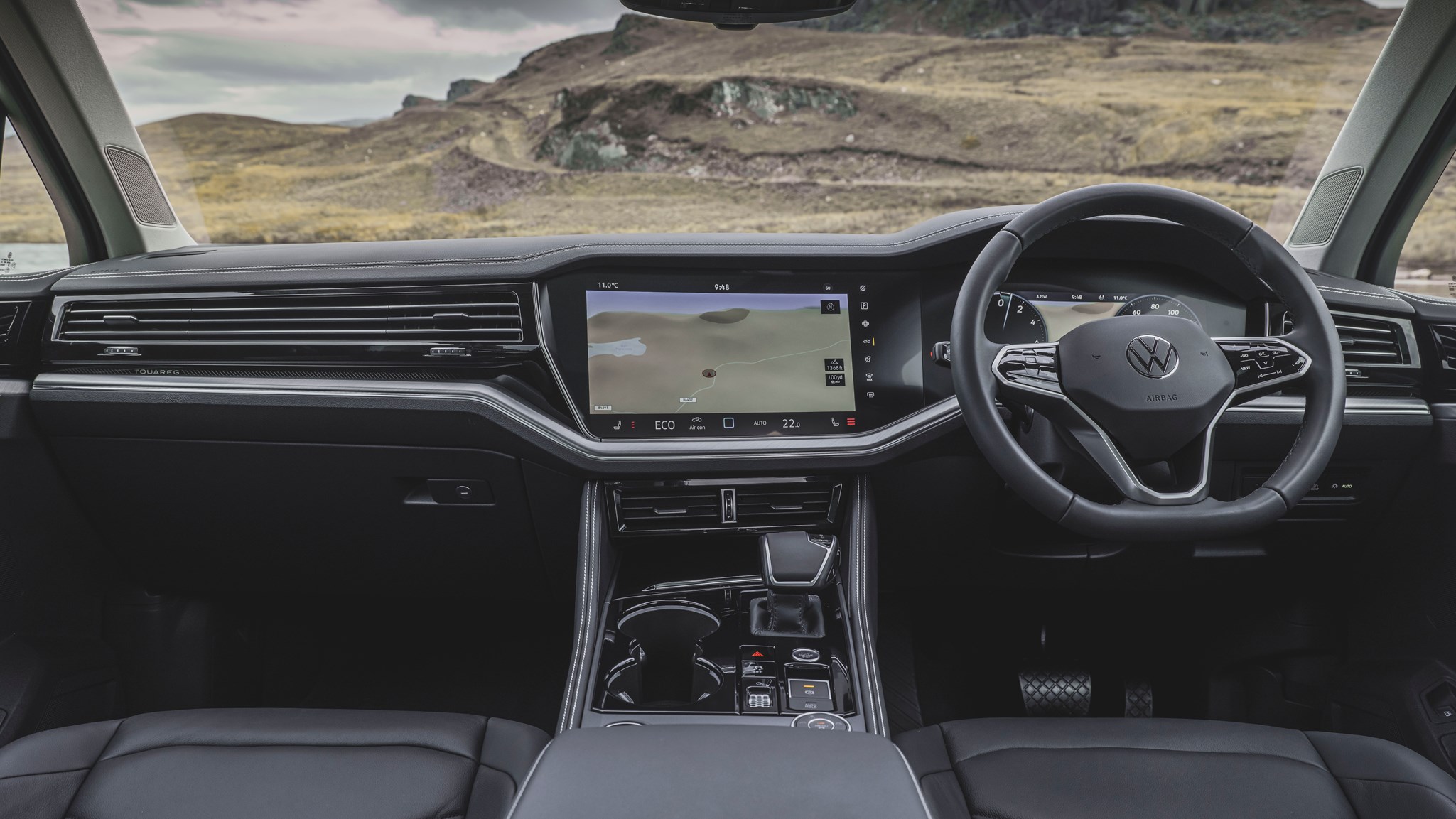► Touareg facelifted in 2023
► Tech and chassis tweaks
► Carryover V6 diesel, petrol or hybrid
Amongst the all-electric and long-range plug-in hybrid models in the range, the Volkswagen Touareg looks increasingly like something from the distant past. A facelift in 2023 updated the then five-year old design, yet the changes seemingly don’t run deep enough compared to the best SUVs in the class.
You get refreshed looks, fresh tech and some suspension tweaks. What you don’t get are any efficient new engines or higher-capacity plug-in hybrid batteries. The engines are unchanged, with a choice of 228bhp or 282bhp 3.0-litre diesel V6, a 335bhp 3.0-litre petrol V6 or two plug-in hybrids. These both use the petrol V6, with the regular eHybrid producing a healthy 375bhp and the R 456bhp.
What’s new about the Touareg?
When the press pack leads with new matrix LED headlights, you know it’s going to be a fairly minor facelift. Their 38,000+ individual LEDs should make it a dream on dark drives and a nightmare should they ever pack up out of warranty. Lightbars front and rear arguably add a dash of modernity, although the illuminated rear VW badge is perhaps a bit much.

All versions now get a large 15.0-inch screen and 12.0-inch digital driver’s display previously reserved for higher-end models. The sat nav is now accurate enough to pick up what lane you’re in and there’s HD mapping, while the USBs are upgraded from A to C with fast charging capability.
The driving assistance systems have been improved, and there’s a remote parking function via an app. You now get a roof load sensor that helps the ESC understand the loads it’s dealing with and tweaks to both the steel and air suspension systems, too.
Does it drive any better?
Marginally, yes. The automatic gearbox hesitates slightly if you explore the further reaches of the throttle pedal, but then shifts sweetly enough, while the top V6 diesel provides all the performance you really need. Yes, the petrol V6 is a little quicker, but it needs working harder to deliver the goods.

The diesel is muted, but can sound a little strained at times and isn’t as smooth as Land Rover Discovery’s inline-six. The plug-in system is competent with a smooth handover between electric and petrol mode, although it’s quite sedate in EV mode. As we’ll come on to, the range isn’t huge and there is a knock-on effect. At least all models including the PHEVs can tow a 3500kg braked trailer.
Wheel sizes are up across the board and now range from 20-22-inches in diameter. Only base Elegance spec gets steel springs paired with fixed dampers, while Black Edition and R get air springs and adaptive dampers. On steel you’re aware of a firmness over sharp-edged bumps and holes at low speed, but it’s quite agreeable as you go faster.
Air suspension is a relatively cheap option, as is four-wheel steering on Black Edition. The former is a little more compliant yet allows you to stiffen things up if you want to push on, while height adjustment and self-levelling are introduced. The latter helps with agility and makes tight situations significantly less stressful. Air is a necessity in our book, rear steer less so.

The handling is pleasingly neutral and you can carry plenty of speed, although there’s less sense of connection and fun than you’d get in a Cayenne or BMW X5. No, this is an easy-going SUV that prefers to quietly soak up the miles than be hustled down a backroad.
What’s the interior like?
The interior changes are far less noticeable than those outside. The increased padding for the armrests on the doors is welcome, and a bit more squish around the centre console and transmission tunnel doesn’t hurt either. The large infotainment screen has key functions such as heating at the bottom of the screen, with a few physical controls for drive mode and suspension.
It’s responsive and has sharp graphics with menus that will be familiar to VW owners. In other words, there are easier to navigate systems out there, but you do learn its foibles. A few more physical controls would be welcome, especially as the steering wheel buttons are now touch sensitive. Quality is good, although it’s clear this is the cheapest car to come on this platform. An Audi Q7 is nicer insider, let alone a Bentley Bentayga or Lamborghini Urus.

Space is good, though. There’s no option of seven seats so instead you get a vast cargo area. It’ll swallow 810-litres with the rear seats up and boot cover in place, with plug-in models still getting a generous 655-litres. Rear head and legroom are plentiful for six-footers even with another couple up front, and getting three on the rear bench isn’t too much of a squeeze.
Verdict
Minor changes undoubtedly make the Touareg marginally better, although we’d suggest it is perhaps too little too late. Although we appreciate the high level of standard equipment and plentiful space, there’s still a brittle edge to the ride and the PHEV systems look way off the pace.
Where rivals such as the BMW X5 50e and Cayenne e-Hybrid boast massive EV ranges and low BIK payments, emissions of over 50g/km and an claimed electric range of just 31 miles make the Touareg look old hat. The diesel is a bit more recommendable, but even then it’s outgunned by both Land Rover and Mercedes.